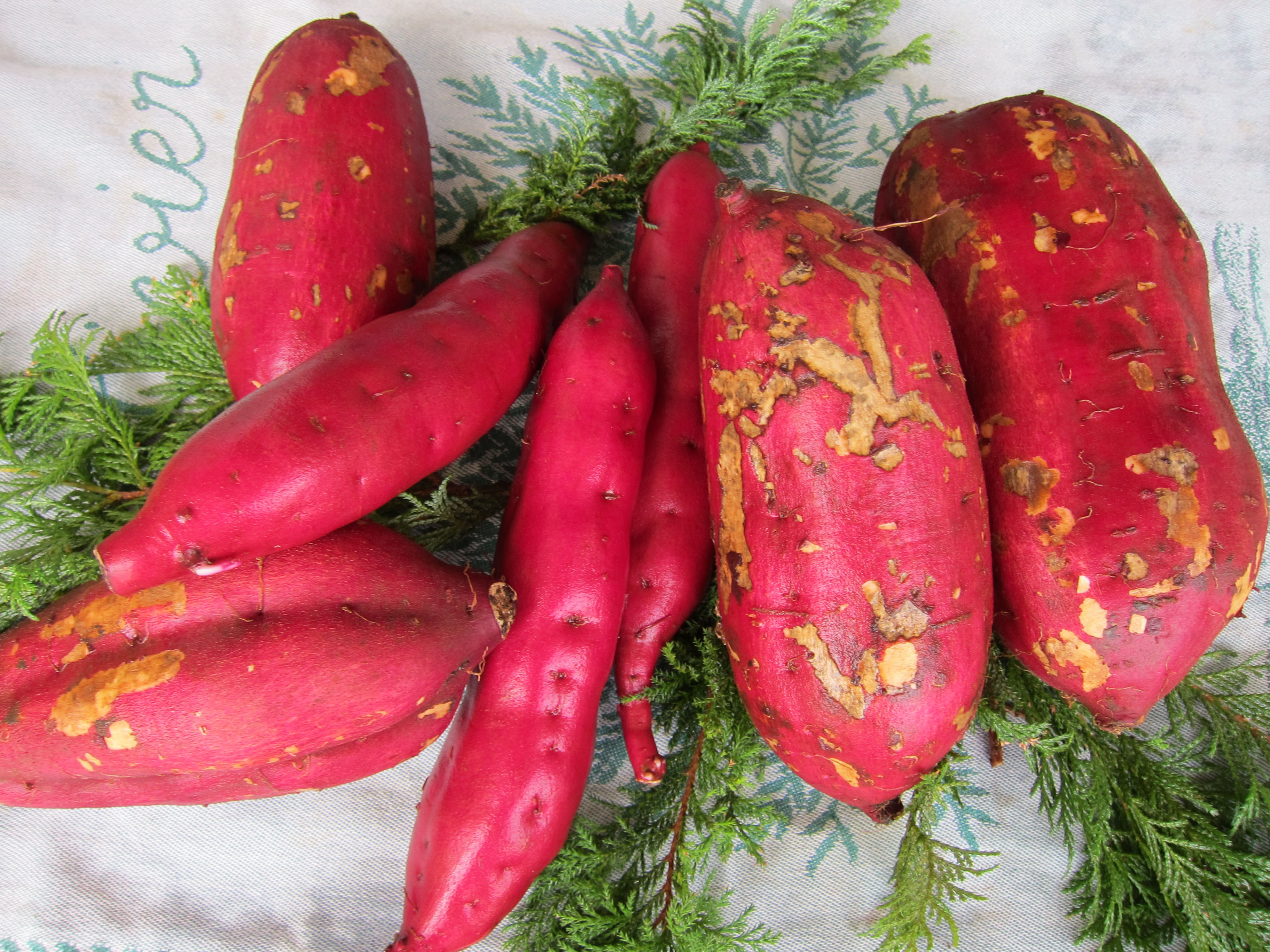The mournful chant of the ishi-yakiimo-ya or stone-roasted sweet-potato seller advertising his wares is a cherished part of the late fall and winter landscape in Japan. The sing-song chant is often accompanied by the thin, penetrating tone of a whistle, which seems to echo the sound of the wind. Braving the cold to rush out and buy a piping hot sweet potato wrapped in newspaper, holding it in freezing hands, blowing on it to cool it down while saying "Achi! Achi!" ("Hot! Hot!") is a precious memory from my childhood.
Unfortunately , the ishi-yakiimo-ya vending cart is no longer as ubiquitous as it used to be, though with the recent nostalgia for the postwar Showa Era, they, along with other traditional street-side food vendors, may be making a slow comeback.
While several kinds of imo, the Japanese word for "potato," are consumed in Japan — jagaimo (white potato), satoimo (taro), yamaimo (mountain yam) and more — the satsumaimo or sweet potato holds a special place in its culture and history.

















With your current subscription plan you can comment on stories. However, before writing your first comment, please create a display name in the Profile section of your subscriber account page.